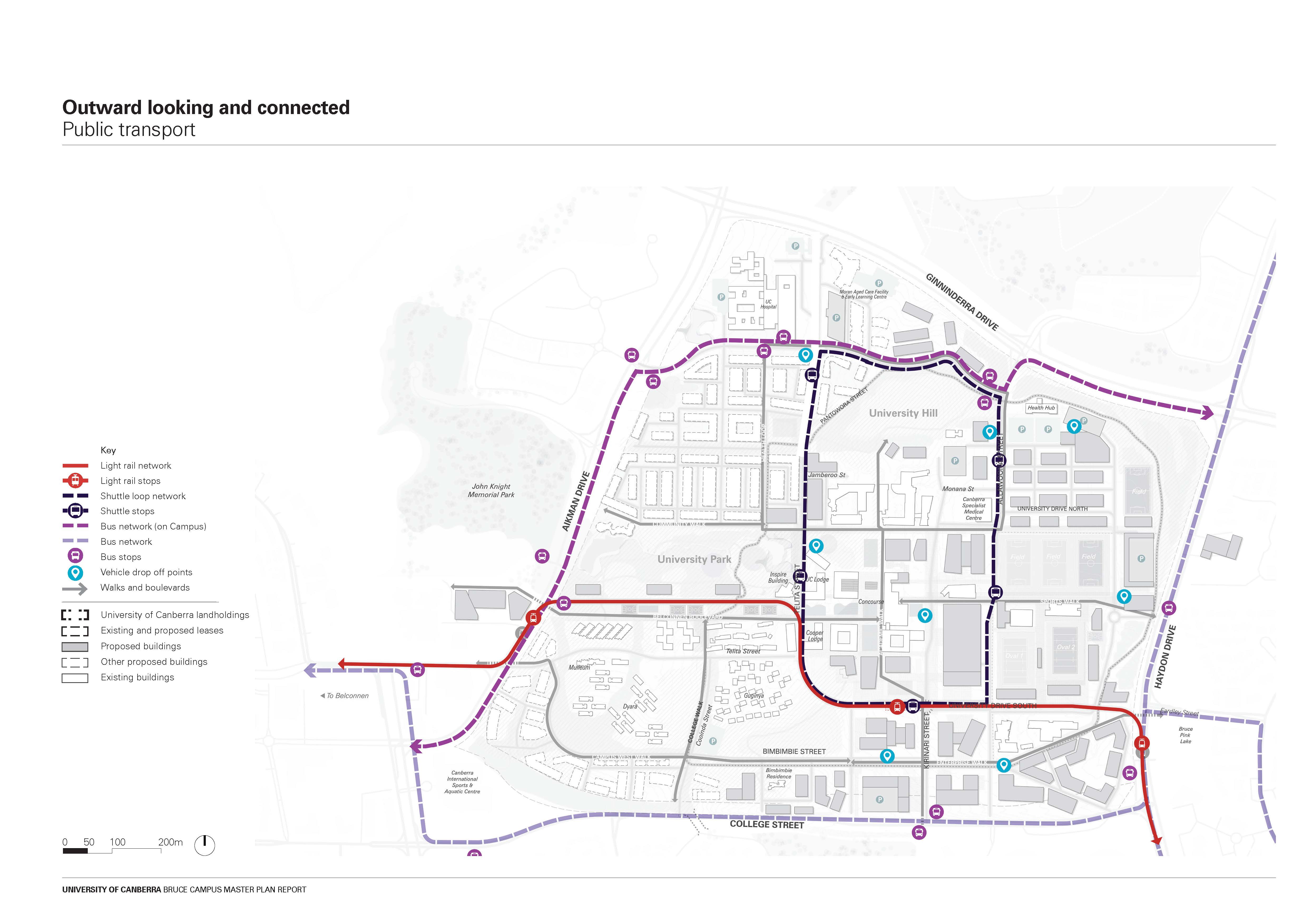Public transport, pedestrian and cycling
Vision
Pedestrian-prioritised zones will showcase opportunities for learning and engagement, and support social, natural and retail spaces, moving private vehicles towards the periphery of campus and encouraging human movement and improved connections.
Modal shift targets:
- 50% private transport
- 30% public transport
- 20% active transport
Context
Whilst the campus is currently serviced by public bus to the periphery of campus, private vehicle remains the dominant mode of transport for UC staff and students.
Direction
- The University will advocate for light rail to travel through campus, connecting Belconnen to the City, with the University as an important destination.
- A transport interchange is proposed adjacent to the campus core, allowing an internal road network that supports buses travelling through the campus, near the proposed light rail stop.
- A shuttle-loop within the campus will connect key destinations of the University, supporting safe movement. This could be via autonomous vehicle, further supporting modal shift away from private vehicles and aiding longer term plans to relocate long-term parking towards the periphery of campus.
- Light rail will encourage higher density development and compact urban form, an efficient and rapid transport through the campus, a strong and clear connection with Belconnen Town Centre and adjacent settings, a productive campus that attracts investment and support innovation and job creation, in a location directly in line with jobs and services and proposed housing development.
- Develop a Primary Pedestrian Network providing direct and efficient pedestrian connections between major campus destinations.
- Each Primary Walk will have a distinct and unique experience and character that leverages its anchoring nodes and the natural environments it interfaces.
- A Secondary Pedestrian Network provides access to secondary building entrances and more discrete landscape spaces such as laneways, alleyways, and small courtyards.
- Quality of pedestrian crossings will be improved to facilitate safer internal circulation, including raised crossings.
- Cycle routes will be created via a mix of the Primary Pedestrian Network and the internal road network.
- Provide end-of-trip facilities with secure and aesthetic bicycle parking facilities in front-of-house locations.



